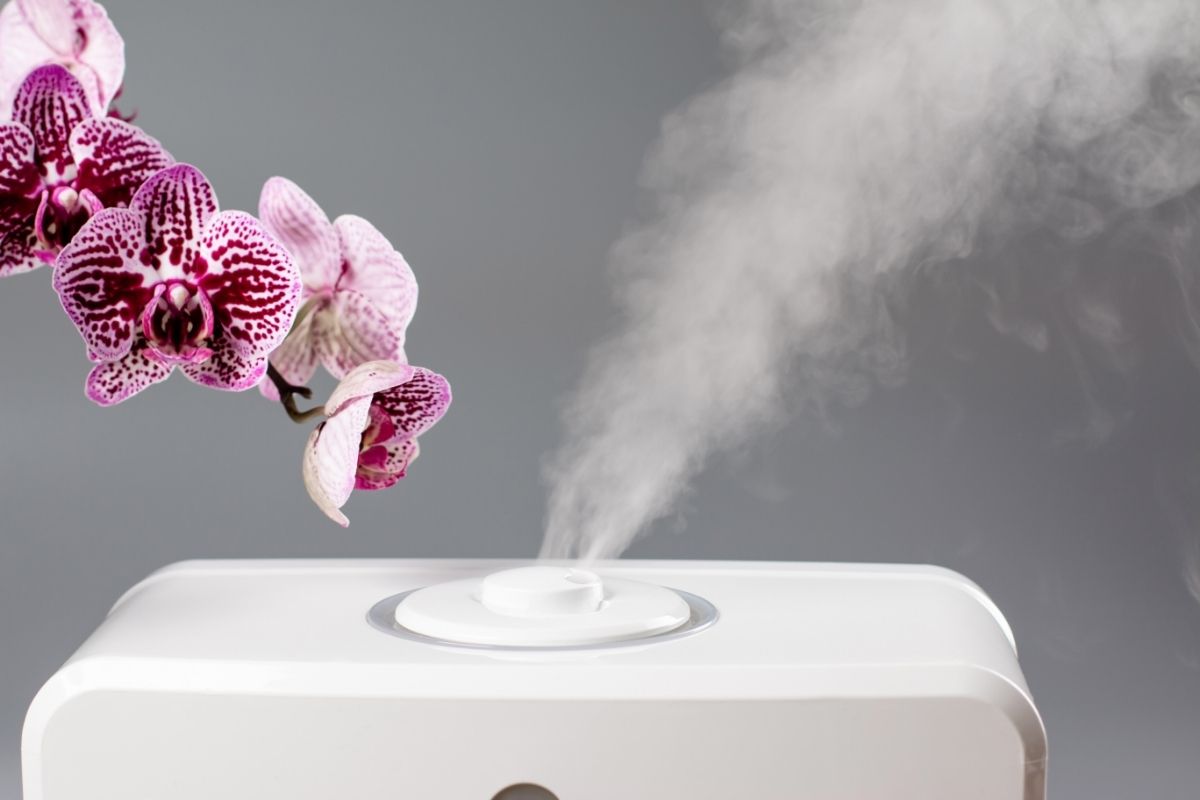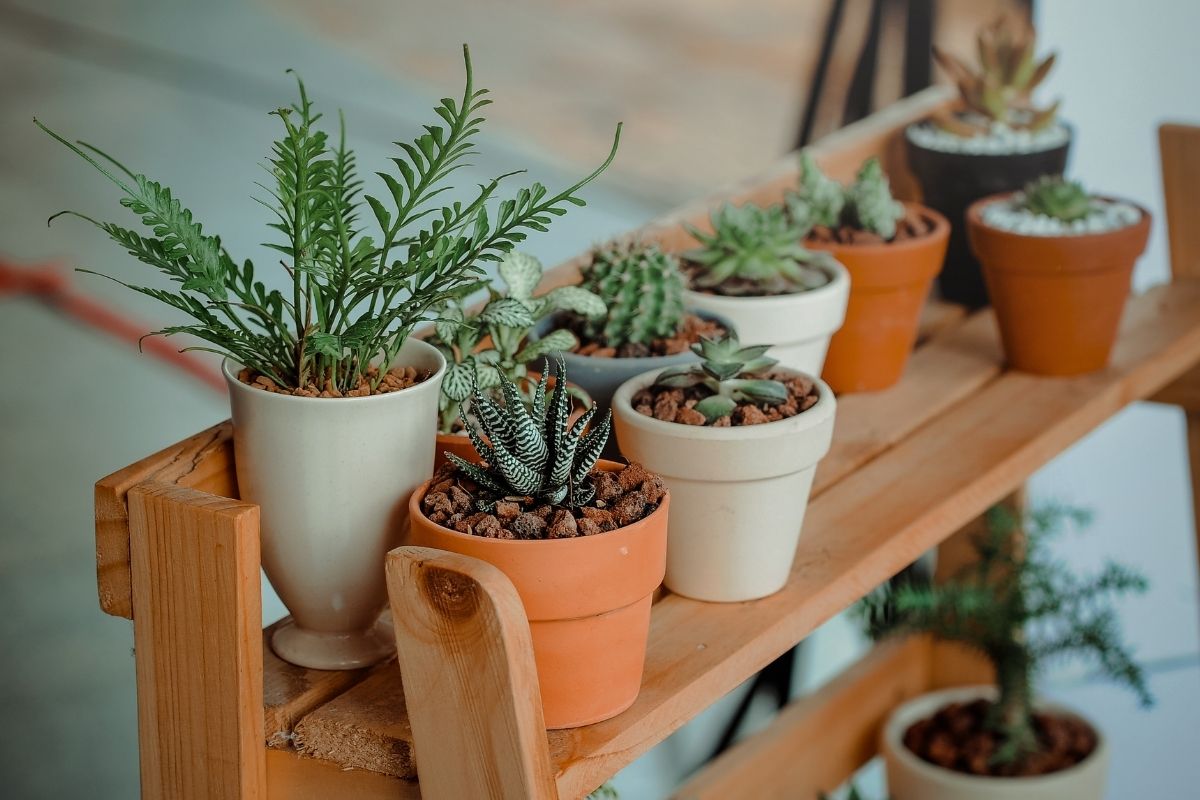If you find that your plants aren’t loving the air in your home, there can be a lot of different things you can do to improve their health and increasing humidity for your houseplants.
If you have tropical plants or live in a particularly dry region, you may need to add some humidity to your home in order for your houseplants to thrive.
It can be so demotivating when you notice that your houseplants are slowly wilting away, but something as simple as increasing the humidity can really make a world of difference.
This is relatively easy to do, so don’t worry! You can restore the health of your beautiful plant babies again!

How Often Should I Water My Houseplants?
If you want to give your plants a good start, then you should provide them with enough moisture.
The amount of humidity required depends on the type of plant you have. For example, indoor plants require less humidity than outdoor ones.
Plants absorb water through their leaves. When they get too much or too little water, they wilt.
This means that you should check your plants regularly to see whether they need watering. If you notice that your plants are wilting, it is time to water them.
Before you think about increasing the humidity for your plants, find out online what the best humidity levels for your individual plants are in order for them to thrive.
You can then use a soil thermometer to measure the temperature and humidity in your pots.
Once you’ve done this, it’ll be easy to know how much you need to increase the humidity in your room in order for your plants to thrive the best!
If you live in a dry climate, you may not be able to keep your plants alive without extra humidity. In this case, you will need to add some kind of humidifying misting system to your houseplants.
You can also use an air humidifier to increase the humidity in your home.
Humidifiers work by spraying fine droplets of water into the air. These droplets evaporate quickly, cooling the air and increasing the humidity.
Related: Eggshells as Organic Pest Control Plus Their Other Amazing Benefits for Plants
How To Increase The Humidity For Your Houseplants
There are two ways to increase the humidity in a room: using a humidifier and adding more water to the air manually with a mister.
Using A Humidifier

Using a humidifier is one way to increase the humidity in the air. A humidifier works by spraying water into the air. An air humidifier uses a fan to blow warm moist air into the room.
The moisture evaporates into the surrounding air, which makes it easier to breathe. Humidifiers are often used in hospitals to keep rooms dry and comfortable.
They are also useful at home to prevent colds and flu by keeping the air from getting too dry.
The process involves heating water to produce steam, which then travels through tubing into the room where it condenses back into liquid form.
This cycle repeats itself continuously, keeping the air moist at all times.
Humidifiers are not just good for plants either! Did you know they can be good for your health too? Having an air humidifier can help prevent dry skin, cracked lips, itchy eyes, and sore throats.
It also makes breathing easier and lessens the risk of catching colds and flu if you have very dry air in your home.
You can buy a dehumidifier if you think that there is too much humidity in your house, as this too can wreak havoc on your health by allowing mold to grow in your home. Dehumidifiers remove excess moisture from the air.
Using A Mister
The best way to water plants is by hand.
The plant mister is designed to spray water directly onto plants without disturbing soil structure. It has a built-in timer, so you don’t have to worry about watering every day.
The best way to keep your houseplant happy and healthy is by using a plant mister.
This device will ensure that your plants receive the right amount of water at the right times, which will prevent them from getting too hot or cold.
It will also allow you to mist your plants regularly without having to worry about wasting any water.
This method has many advantages, including being able to control exactly where the water goes and not having to worry about overwatering or underwatering.
The Best Of Both Worlds
The best way to increase the humidity is to combine both methods. Use a humidifier when you first bring your plants indoors and then switch to adding water to the air once your plants begin to grow.
A manual indoor plant mister is a great way to keep your house smelling fresh and clean. It’s easy to use and doesn’t require electricity.
There are different types of humidifiers available. Some are designed specifically for plants and others are suitable for humans as well.
The best way to water your houseplants is by misting them regularly. This will keep them healthy and happy.
If you don’t want to use a handheld sprayer, you can always invest in a humidifier. These devices are great because they allow you to control the humidity level in your home.
Related: Epsom Salt for Plants: Is it Good for Your Garden & How to Use it?
Other Things You Can Do For Your Plants

You may find they do not do as well during the winter months, or get brown edges on the leaves – this is a sure sign that they could do with some extra humidity.
However, just as damaging as underwatering is overwatering! Controlling indoor humidity for plants is really important for healthy plant growth.
To avoid plants that wilt through overwatering, be sure to place them in a container that has drainage holes, a drip tray, or a tray of pebbles, thereby preventing the buildup of mold or bacterial growth.
Frequently Asked Questions
What Humidity Levels Should You Have?
Humidity levels should be maintained between 40% and 60%. Too high and you risk causing damage to your plants, while too low, and they won’t thrive.
If you live somewhere in very dry weather, you might consider buying a humidifier.
How Light Should Your Home Be?
When you start growing houseplants, make sure you provide enough light for them to grow properly. If you notice that your plants look pale and unhealthy, you may need to adjust their lighting.
Final Thoughts
Plants come in all shapes and sizes, and with a bit of knowledge and love, you can have a thriving tropical paradise in your home!
Remember to research specific humidity requirements for each of your plants, and you’ll be able to take exceedingly good care of them!
Editor’s Recommendations
How To Propagate Rubber Plant: Things To Know Beforehand
How To Care for A Spider Plant? (Plant Care Answers and More)
55 Plant Quotes To Inspire Every Plant Lovers and Keep Them Going







